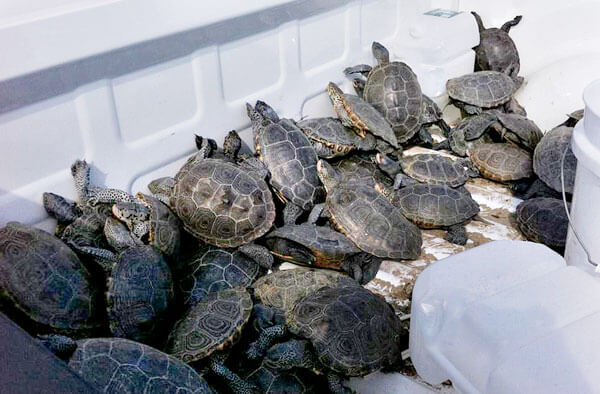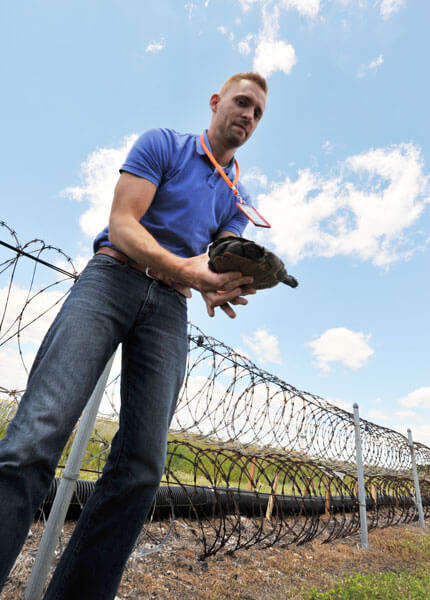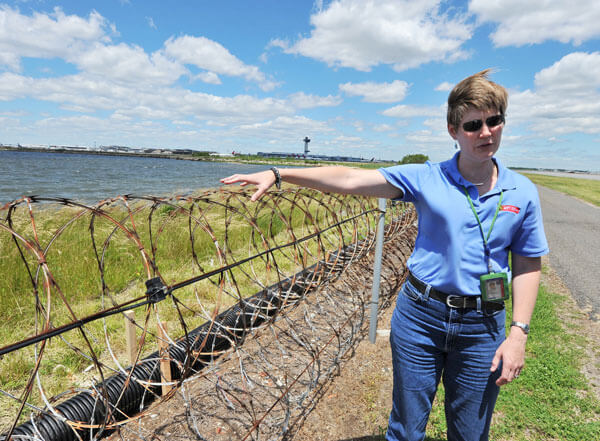By Rich Bockmann
When it comes to wind and clouds, Mother Nature is pretty much an unstoppable force as far as your flight plans are concerned. Turtles, on the other hand, appear to be more manageable.
The Port Authority is hoping a plastic barrier at the end of one of JFK Airport’s runways will keep a swarm of frisky turtles off the tarmac and out of the way of arriving and departing planes.
“The bottom line is we want the turtles to be safe and we want the planes to run efficiently,” Port Authority spokesman Ron Marsico said. “We’re hoping this barrier will keep everybody happy.”
Diamondback terrapins have long made their home in the brackish marshlands of Jamaica Bay around JFK’s 4L runway, but in the past few years the population has been booming, and Marsico said airport workers removed about 1,300 of the reptiles as they made their way across the tarmac during their nesting season last year.
The turtles — which lay their eggs in the sandy areas of the bay — have been able to crawl under the fence surrounding the runway, and the PA is hoping a 4,000-foot-long, 8-inch-thick plastic tube will prove a more insurmountable barrier.
Russell Burke, a biology professor at Hofstra University and an expert on the bay’s diamondback terrapin population, said similar barriers have worked before and he thinks they will be effective here.
“I think it’s very likely to be successful in keeping them off the runways in the same way it’s been able to keep them off highways in other places,” he said. “The real question is what the turtles will do now that they can’t go on the runway.”
Burke said his concern is that the turtles may choose to nest along the barrier where they may be vulnerable to predators like raccoons.
He said there are multiple distinct populations in the bay — some separated by seemingly modest physical barriers — that inexplicably keep to themselves.
The population near JFK has been expanding exponentially over the past few years, he said, and estimates put its female population near 12,000.
“The JFK population has been growing rapidly over the last four years. It’s really unheard of,” he said. “The real puzzle is why it’s growing so quickly.”
The cool water temperature this year will have the turtles nesting about a week later than they normally do, and depending on the air temperature their eggs should hatch around the end of August, the professor said.
He added there is much that still is not known about the population, such as how many years the females will reproduce.
“They’ve been known to be reproducing well into their 100s,” he said. “I think nobody would be surprised if at 60, 70 or 80 [these terrapins] are still reproducing. Not just living, but reproducing. That’s pretty impressive.”
Reach reporter Rich Bockmann by e-mail at rbockmann@cnglocal.com or by phone at 718-260-4574.

































